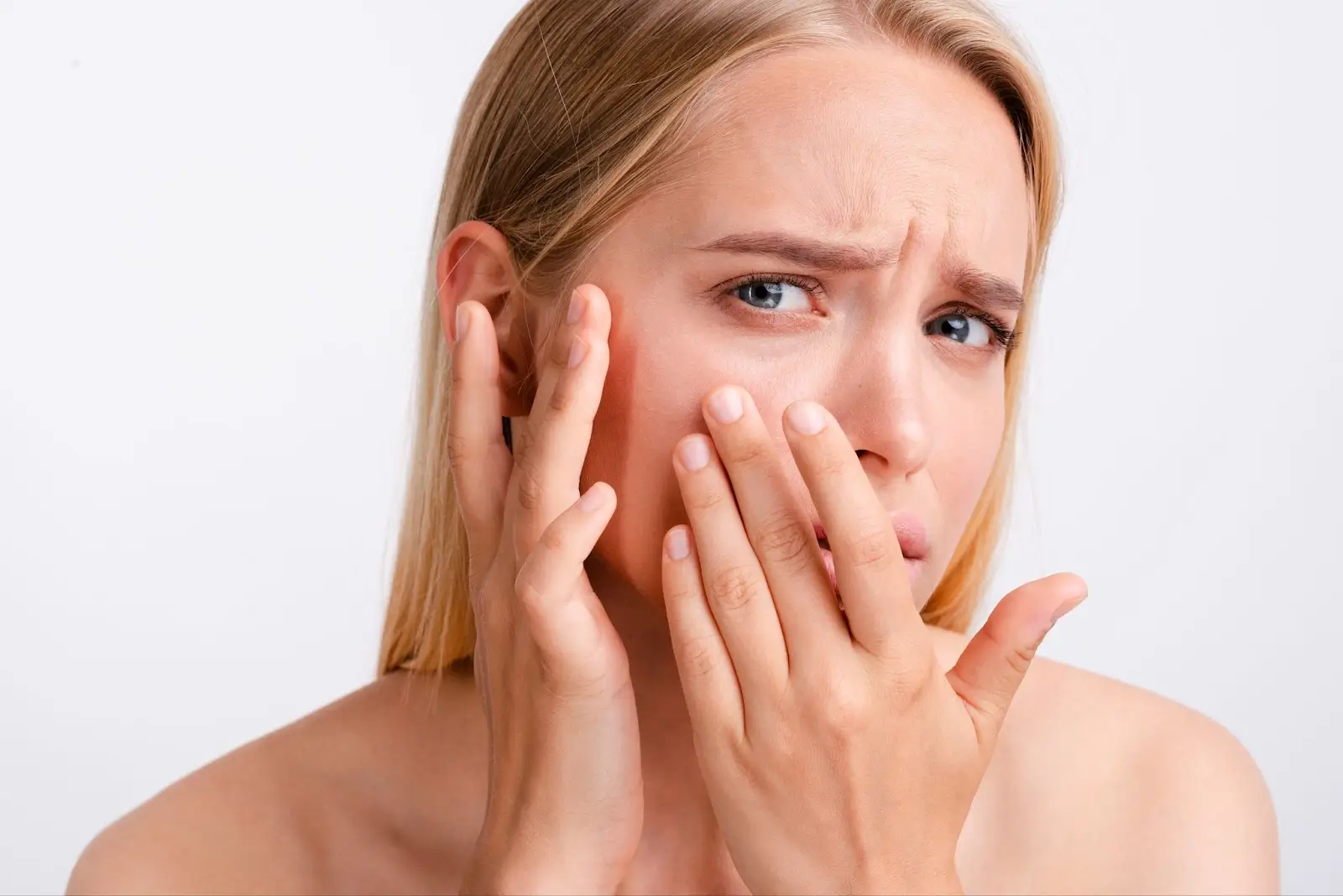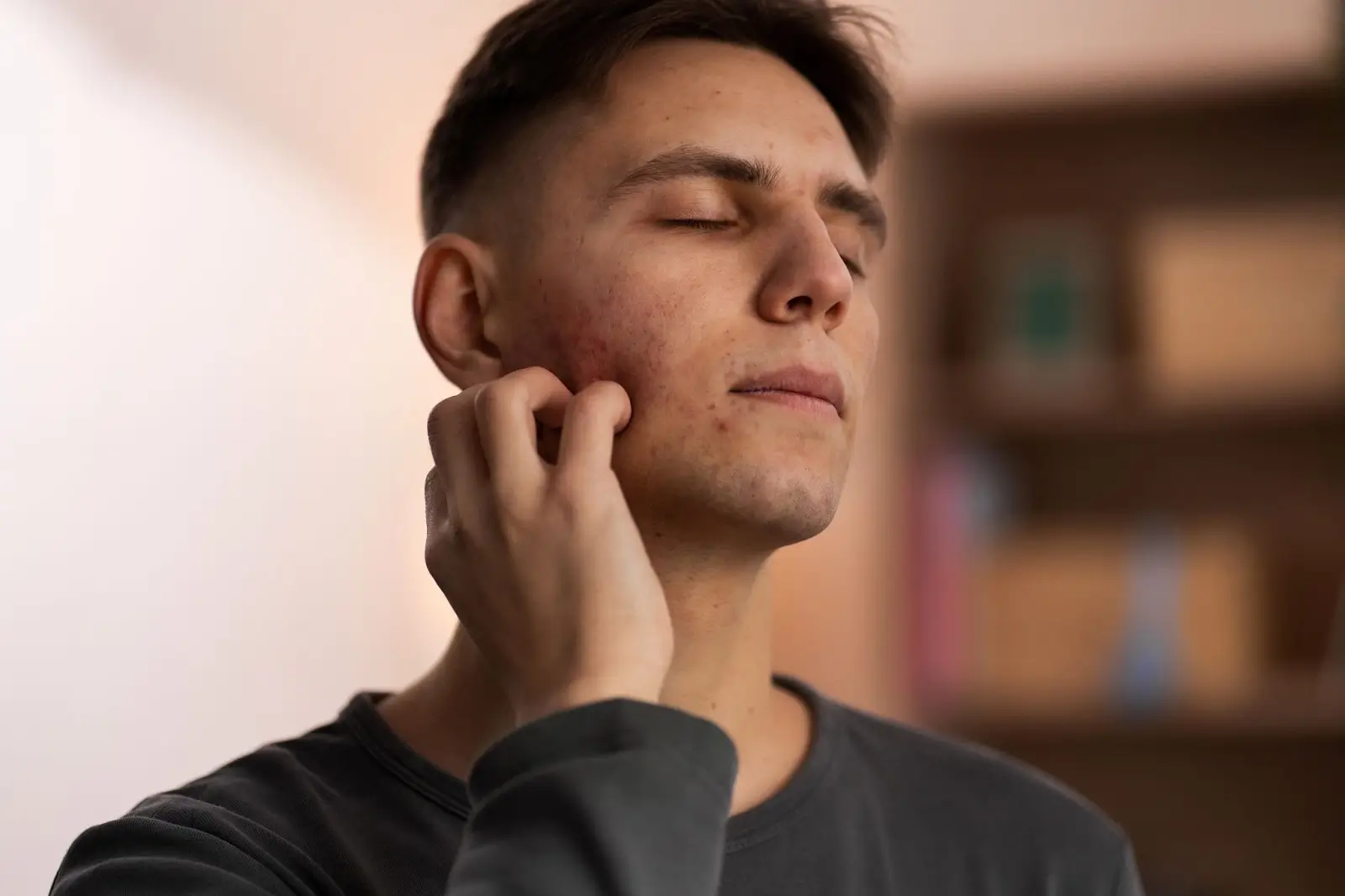
Swelling is a common reaction to many medical treatments, including injectable dermal fillers. In fact, studies show that about 30% of patients experience mild to moderate swelling after facial filler procedures, usually resolving within a week. This highlights why knowing the possible side effects of any aesthetic treatment is crucial for safe and confident decision-making.
Lanluma, a poly-L-lactic acid (PLLA) injectable, has become popular for its ability to naturally stimulate collagen production and restore volume in both the face and body. While it’s generally well-tolerated, being aware of the full range of potential side effects, including swelling, helps patients and practitioners make informed choices.
This article offers a comprehensive overview of Lanluma’s side effects, categorizing them into short-term, long-term, mild, and serious reactions. Understanding these will empower you to decide if Lanluma aligns with your aesthetic goals and health needs
Key Takeaways
- Swelling, redness, and bruising are the most common short-term side effects of Lanluma. These are typically mild and resolve within days to two weeks.
- Rare but serious adverse events include nodules, infections, filler migration, allergic reactions, and vascular complications. Early detection and treatment are essential.
- Proper patient selection and managing expectations reduce risks, emphasizing the importance of health screening and informed consent.
- Skilled administration by qualified providers and adherence to sterile technique are crucial for safety and optimal results.
- Following post-treatment care, such as avoiding strenuous activity, applying cold compresses, and attending follow-ups, supports recovery and minimizes complications.
- Open communication between the patient and the practitioner enhances treatment safety and satisfaction.
About: Doctor Medica is your trusted supplier of top-quality dermal fillers, viscosupplements, and more for your medical practice. We offer genuine products from leading brands at the lowest prices in the market. If you’re looking to order Lanluma online for your practice, contact Doctor Medica today.
Short-Term Side Effects

The most common side effects of Lanluma generally appear within the first few days after injection. These reactions tend to be mild and temporary, resolving on their own without the need for medical intervention. Here’s a detailed look at these short-term side effects:
- Swelling: This is one of the body’s natural inflammatory responses to the filler injection. Fluid accumulates around the treated area, leading to swelling ranging from mild puffiness to more noticeable enlargement. Swelling usually lasts anywhere from a few days up to two weeks. The area may sometimes feel firm or tender, but these symptoms typically subside gradually as healing progresses.
- Redness: Injection sites may exhibit redness similar to mild irritation or a rash. This occurs due to increased blood flow as the skin reacts to the needle puncture and filler material. Redness often fades within several days, though it may linger slightly longer in individuals with sensitive skin without causing pain.
- Bruising: Common with any needle-based procedure, bruising occurs when small blood vessels under the skin are nicked. Bruises appear as purplish or dark marks of varying size and severity and typically heal within one to two weeks. Applying cold compresses immediately after treatment can reduce bruising and speed recovery.
Patients undergoing procedures like the Lanluma hip dips treatment may experience these side effects more prominently due to the thinner, less cushioned skin in this area. However, these reactions remain mild and transient and follow the usual course of healing.
Long-Term and Serious Adverse Events

Though rare, more serious side effects can manifest weeks or even months after Lanluma treatment. Awareness of these potential issues is critical for early intervention and management:
- Formation of Nodules or Granulomas: These small, sometimes firm lumps result from the immune system’s response to the filler. Nodules can be painful or cause visible bumps and may persist well beyond the initial swelling phase, affecting both comfort and appearance.
- Infections: Though uncommon, bacterial infections can develop if bacteria enter the injection site. Signs include increased redness, warmth, swelling, pain, or pus formation. Prompt antibiotic treatment is essential to prevent worsening or spread.
- Filler Migration: In rare instances, the filler may move from the original site, causing asymmetry or lumps in unintended areas. Corrective procedures may be necessary to reposition or dissolve the filler for a more balanced look.
- Allergic Reactions: Extremely rare but possible, allergic responses can range from itching and rash to severe systemic reactions requiring emergency care.
- Vascular Complications: Accidental injection into blood vessels may cause tissue damage or necrosis, a serious event that requires immediate medical attention to avoid permanent harm.
Recognizing early warning signs of these complications enables timely treatment, ensuring patient safety and improved outcomes.
Patient Selection and Risk Mitigation
Selecting appropriate candidates for Lanluma is crucial to minimizing complications. A thorough health screening should exclude individuals with active skin infections, autoimmune diseases, or allergies to filler ingredients, all of which can increase adverse reaction risks and delay healing.
Setting realistic expectations is equally important. Patients must understand common mild reactions and rare but serious risks, fostering informed consent and satisfaction with outcomes.
Practitioner skill and experience greatly influence safety and success. Professionals knowledgeable about Lanluma’s characteristics and anatomical considerations of treatment areas can administer injections with precision. A detailed consultation, including medical history review, is standard practice before treatment.
Post-Treatment Care and Monitoring
Adherence to post-treatment instructions helps minimize side effects and promotes optimal results. Recommended care includes:
| Post-Treatment Care | Description |
| Avoid strenuous activity | Refrain from intense physical exercise for 24-48 hours to help reduce swelling and bruising. |
| Apply cold compresses | Use cold packs immediately after injection to minimize inflammation and discomfort. |
| Keep the area clean | Maintain hygiene around the treated site to prevent infections. |
| Avoid massaging or pressing | Do not massage or press the treated area unless your provider specifically instructs you to. |
| Attend follow-up visits | Regular check-ups allow early detection and management of any side effects. |
| Report unusual symptoms | Contact your healthcare provider immediately if you experience unusual pain, prolonged swelling, or lumps. |
Strict adherence to these guidelines supports smooth recovery and long-term satisfaction with the treatment.
Conclusion
Lanluma is an effective option for skin tightening and rejuvenation. While most side effects are mild and short-lived, it is important to be aware of potential long-term complications such as nodules. Careful patient selection, skilled administration, and guided aftercare minimize risks and optimize outcomes.
Consulting with an experienced practitioner ensures the treatment matches your aesthetic goals and health profile. Open communication and patient education further support a safe and satisfying journey with Lanluma.
FAQs
1. What are the most common Lanluma side effects?
The most common side effects are mild swelling, redness, and bruising at the injection site, usually resolving within two weeks.
2. Can Lanluma cause serious complications?
Yes, although rare, serious complications like nodules or granulomas can form and may require medical treatment.
3. How can I reduce the risk of Lanluma side effects?
Choosing a qualified injector, undergoing proper health screening, and following post-treatment care instructions can minimize risks.
4. Are Lanluma side effects different when used for hip dips?
Side effects like swelling and bruising may be more noticeable around the hip dips due to thinner skin, but they are generally similar to those in other treated areas.
References
Amselem M, Fatsea D, Forte R, Hasenöhrl C, Haus A, Saalabian A. Safety and effectiveness results of an innovative injectable poly-L-lactic acid-based collagen stimulator (Lanluma®)-Clinical outcomes at 9 months in a post-market study. J Cosmet Dermatol. 2024;23(12):3893-3902. doi:10.1111/jocd.16527
Wu L, Salti G. Combined forehead and temporal lifting: an innovative approach to Lanluma V treatment. J Cosmet Dermatol. 2025;24(1):e16583. https://onlinelibrary.wiley.com/doi/full/10.1111/jocd.16583
Related Articles
Joanna Carr
Understanding Hyaluronic Acid (Ha) Dermal Fillers
Interested in learning more about Understanding Hyaluronic Acid Based Dermal Fillers? Browse Doctor Medica's comprehensive archive of blog posts.
Joanna Carr
Jalupro Treatment Reviews: What Real Patients Have to Say About Their Experience
Read real Jalupro treatment reviews from patients. Discover their experiences and insights at Doctor Medica.
Joanna Carr
Restylane For Nasolabial Folds Explained
Interested to learn more about Restylane For Nasolabial Folds? Browse Doctor Medica's comprehensive listing of blog posts.


